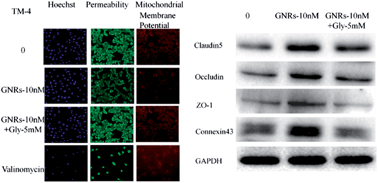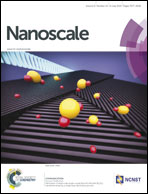Metabolomic profiles delineate the potential role of glycine in gold nanorod-induced disruption of mitochondria and blood–testis barrier factors in TM-4 cells†
Abstract
Gold nanorods (GNRs) are commonly used nanomaterials with potential harmful effects on male reproduction. However, the mechanism by which GNRs affect male reproduction remains largely undetermined. In this study, the metabolic changes in spermatocyte-derived cells GC-2 and Sertoli cell line TM-4 were analyzed after GNR treatment for 24 h. Metabolomic analysis revealed that glycine was highly decreased in TM-4 cells after GNR-10 nM treatment while there was no significant change in GC-2 cells. RT-PCR showed that the mRNA levels of glycine synthases in the mitochondrial pathway decreased after GNR treatment, while there was no significant difference in mRNA levels of glycine synthases in the cytoplasmic pathway. High content screening (HCS) showed that GNRs decreased membrane permeability and mitochondrial membrane potential of TM-4 cells, which was also confirmed by JC-1 staining. In addition, RT-PCR and Western blot indicated that the mRNA and protein levels of blood–testis barrier (BTB) factors (ZO-1, occludin, claudin-5, and connexin-43) in TM-4 cells were also disrupted by GNRs. After glycine was added into the medium, the GNR-induced harmful effects on mitochondria and BTB factors were recovered in TM-4 cells. Our results showed that even low doses of GNRs could induce significant toxic effects on mitochondria and BTB factors in TM-4 cells. Furthermore, we revealed that glycine was a potentially important metabolic intermediary for the changes of membrane permeability, mitochondrial membrane potential and BTB factors after GNR treatment in TM-4 cells.


 Please wait while we load your content...
Please wait while we load your content...